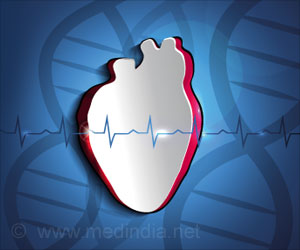Highlights
- To understand how the heart functions, fails and responds to stress, it is important to understand the mechanical activity of the heart.
- Lack of this knowledge also makes it difficult to develop new drugs that specifically target the underlying issue.
- The new I-Wire heart-on-a-chip helps to control the mechanical force applied to cardiac cells allowing the mechanical conditions of the living heart to be reproduced and studied.
The unique aspect of the new device is that it controls the mechanical force applied to cardiac cells. This allows the mechanical conditions of the living heart to be reproduced, which is continually stretching and contracting, in addition to its electrical and biochemical environment.
The human heart beats more than 2.5 billion times in an average lifetime.
"Heart tissue, along with muscle, skeletal and vascular tissue, represents a special class of mechanically active biomaterials," said Wikswo. "Mechanical activity is an intrinsic property of these tissues so you can't fully understand how they function and how they fail without taking this factor into account."
"Currently, we don't have many models for studying how the heart responds to stress. Without them, it is very difficult to develop new drugs that specifically address what goes wrong in these conditions," commented Charles Hong, associate professor of cardiovascular medicine at Vanderbilt's School of Medicine, who didn't participate in the research but is familiar with it. "This provides us with a really amazing model for studying how hearts fail."
The device consists of a thin thread of human cardiac cells that are 0.014 inches thick and stretched between two perpendicular wire anchors.
The fiber is supported by wires and a frame in an optically clear well that is filled with liquid medium.
The fiber's physical changes is recorded by mounting the apparatus on an optical microscope.
The microscope also acts as a spectroscope that can provide information about the chemical changes taking place in the fiber. A floating microelectrode also measures the cells' electrical activity.
Benefits
The I-Wire system can be used to:
- understand how cardiac cells respond to electrical stimulation and mechanical loads
- can be implemented at low cost, small size and low fluid volumes, which make it suitable for screening drugs and toxins
The cardiac cells in most other heart-on-a-chip designs do not exhibit this natural organization.
The researchers have determined that the I-Wire heart-on-a-chip obeys the Frank-Starling law of the heart discovered by two physiologists in 1918.
The law describes the relationship between the volume of blood filling the heart and the force with which cardiac cells contract.
Effect of Drugs on I-Wire
The I-Wire helps to determine the response of cardiac cells to two different drugs that affect heart function in humans and
The scientists tested its response with two drugs known to affect heart function in humans: isoproterenol and blebbistatin.
Isoproterenol is a medication used to treat bradycardia (slow heart rate) and heart block (obstruction of the heart's natural pacemaker). Blebbistatin inhibits contractions in all types of muscle tissue, including the heart.
"Cardiac tissue has two basic elements: an active, contractile element and a passive, elastic element," said Veniamin Sidorov, the research assistant professor at the Vanderbilt Institute for Integrative Biosystems Research and Education (VIIBRE) who led its development.
"By separating these two elements with blebbistatin, we successfully characterized the elasticity of the artificial tissue. By exposing it to isoproterenol, we tested its response to adrenergic stimulation, which is one of the main systems responsible for regulation of heart contractions. We found that the relationship between these two elements in the cardiac fiber is consistent with that seen in natural tissue. This confirms that our heart-on-a-chip model provides us with a new way to study the elastic response of cardiac muscle, which is extremely complicated and is implicated in heart failure, hypertension, cardiac hypertrophy and cardiomyopathy." Sidorov added.
The results are described in an article published in the journal Acta Biomaterialia.
Reference
- John Wikswo et al. I-Wire Heart-on-a-Chip II: Biomechanical analysis of contractile, three-dimensional cardiomyocyte tissue constructs. Acta Biomaterialia; (2017) doi.org/10.1016/j.actbio.2016.11.010
Source-Medindia













